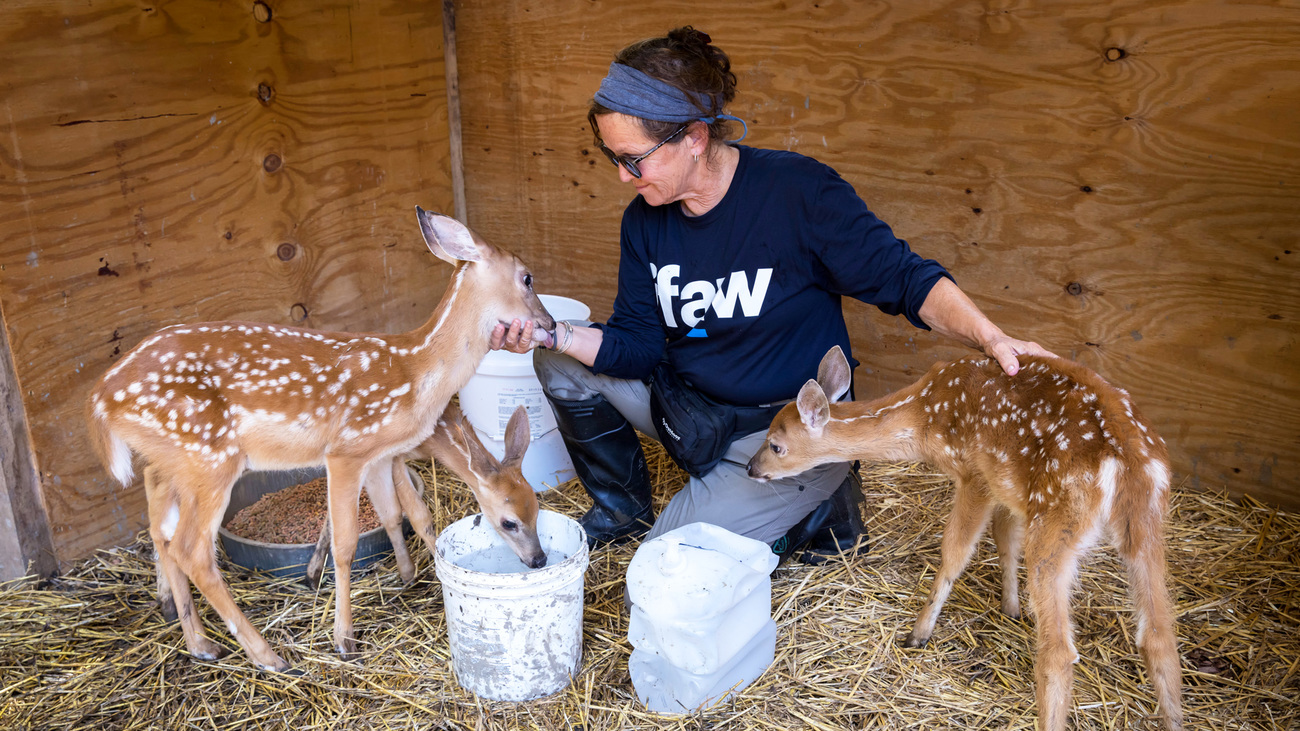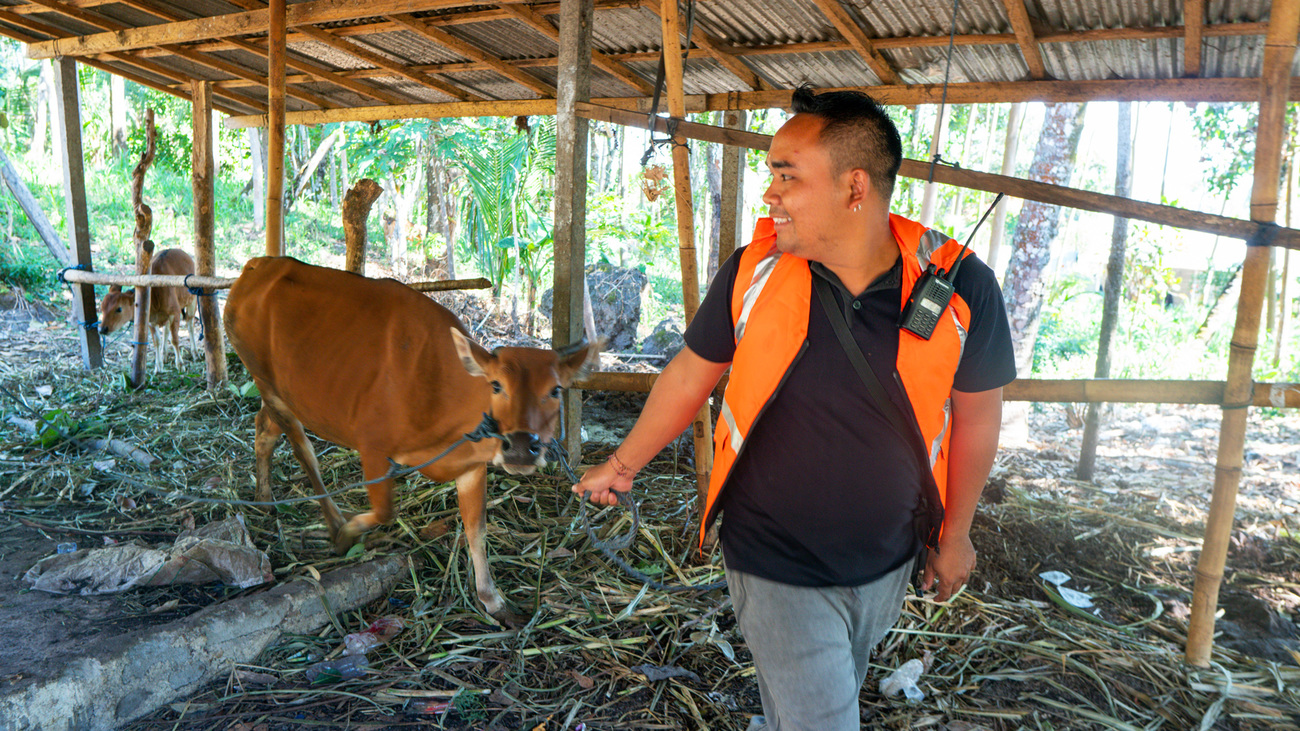Updates
Relief and recovery for animals and people in Myanmar
Read moreCan animals predict earthquakes and other disasters?
There is a common belief that animals can predict earthquakes and other disasters. But is it rooted in evidence? And how is wildlife really impacted by disasters like earthquakes, tsunamis, wildfires, and storms?
Avoiding the harm caused by disasters is clearly an important survival skill for wildlife, so they have evolved certain adaptations to protect themselves. There are some studies and anecdotal evidence that animals have a ‘sixth sense’ that lets them know when danger is approaching. Let’s explore how much truth there is in the claim that animals can predict earthquakes, and which types of animals may be able to predict other types of disasters.

Scientists have not consistently recorded animals acting strangely or leaving the area days before an earthquake. While there is anecdotal evidence of this occurring—dating all the way back to 373 BC—it’s not enough to prove that animals have this ability.
Some animals can detect the vibrations of an earthquake a few seconds before it occurs, thanks to their keen senses—but not a few hours or days. When an earthquake occurs, it produces two types of waves of energy. The smaller P wave (or compressional wave) of an earthquake arrives just before the larger S wave (or shear wave). It moves faster than the S wave because it can travel through solids, liquids, and gases, while the S wave only travels through solids—this is the wave that shakes the ground in a rolling motion. Very few humans notice the vibration of the P wave, but animals can often sense it. It’s unknown exactly how animals may detect P waves, but it could be through their sense of smell, touch, or hearing.
Because tsunamis are created by earthquakes, landslides, or other large disturbances in the ocean, the vibrations these events cause could be felt by some animals, though they go undetected by humans.
However, most of the evidence supporting this idea comes from eyewitness accounts, such as when locals saw elephants and flamingos fleeing to higher grounds ahead of the 2004 tsunami triggered by the 9.1 magnitude earthquake in the Indian Ocean. Others reported domesticated animals behaving strangely.
For some wild animals, their keen sense of smell and awareness of their environment allows them to notice when a fire starts—but they have no way of knowing when and where fires will occur ahead of time. Alongside the impacts of global warming and climate change, the frequency and intensity of fires are increasing dramatically and making it more difficult for animals to survive such events.
Even if they can’t necessarily predict wildfires, some researchers have noticed animals adapting to their increasing occurrence in different ways. A 2018 study of eastern fence lizards in the US found that those living in areas recently impacted by fires can run faster than other members of their species.

In Sweden, pygmy grasshoppers have been changing colours in areas affected by fires. Grasshoppers living in these areas were found to be 50% more likely to be born all-black, likely to blend in with their charred surroundings. In the US, a similar phenomenon has been observed in fox squirrels. In Africa, birds called Temminck’s coursers, which nest on the ground, have evolved to lay ash-black eggs that blend in well with burnt areas.
Though we have developed technology to predict and monitor storms, a recent study suggests that birds may have the ability to predict hurricanes and cyclones much further in advance than people can. Over two decades, the study found that the breeding behaviour of a thrush species was an accurate predictor of the intensity of the Atlantic hurricane season.
These birds, known as veeries, seemingly could sense tropical storms months before they formed. Some years, the veeries ended their breeding season and prepared for migration earlier than in other years. Analysis revealed a correlation between this behaviour and the severity of the following hurricane season. Researchers theorised that starting their migration earlier may give the birds extra time to wait out storms before crossing the open water.
Further research is required to determine if some birds actually have the ability to foresee hurricanes and tropical storms. As climate change exacerbates the intensity and unpredictability of these extreme weather events, they may threaten the survival of many species.
Fortunately, advanced technology allows us to track severe weather events like hurricanes and tropical storms, even if we can’t predict all disasters. This often gives us time to prepare and evacuate. However, animals are still often left by the wayside, and these storms often have unexpected effects—such as when Storm Daniel broke a dam in Libya, flooding the city of Derna. Disasters like these can displace thousands of people from their homes, separate them from their pets, and also injure or strand wild animals that have no humans on which they can rely. That’s why it’s so important that we prepare for disasters as early as we can.
IFAW’s disaster resilience project in Bali uses the unusual movement of wildlife as part of the early warning system for predicting eruptions of the nearby volcano Mt. Agung. While science is unclear on what causes certain animals to flee, this unusual movement has been traditionally reported by village elders and continues to be a part of this community’s disaster preparedness.
For the most part, animals cannot predict disasters. Since disasters can strike at any time, it’s important for us to prepare ourselves—and animals—for earthquakes, tsunamis, fires, and severe weather events.
Responding to disasters is a key part of IFAW’s work—and so is helping people prepare their own beloved pets for disasters like these. Check out our #DisasterReady page and our disaster preparedness resources to learn more.
IFAW helps animals affected by earthquakes and other disasters by sending aid to local organisations and deploying teams of experts.
In May 2024, IFAW responded to deadly flooding that affected hundreds of thousands of people and countless domestic and wild animals in Brazil. Together with the Pantanal Technical Animal Rescue Group (GRETAP), the IFAW-supported team from the Tamanduás Institute rescued and cared for more than 5,000 animals.
In November 2023, in the midst of Australia’s bushfire season, IFAW x UniSC koala detection dog Bear was deployed to search for koala survivors and support local partners on the ground in their search and rescue efforts.
After a 7.8 magnitude earthquake struck Turkey and northern Syria in February 2023, IFAW rushed emergency aid to local organisations that helped rescue animals from the rubble. IFAW also issued emergency aid to Morocco following a 6.8 magnitude earthquake.
In 2022, IFAW responded to a tsunami triggered by a volcanic eruption in Tonga by providing aid to the New Zealand organisation South Pacific Animal Welfare (SPAW). Despite challenges with transporting supplies between islands, SPAW was able to distribute three months’ worth of veterinary supplies throughout the country, helping around 4,000 animals.
Wildfires in Greece in the summer of 2023 left countless animals, including many birds, tortoises, and bats, in need of urgent veterinary care. During and after the fires, IFAW supported ANIMA, which operates the main First Aid station for wildlife in Greece, and deployed a team of experts to help rehabilitate and release nearly 150 tortoises.
In the wake of fires in Maui in August 2023, IFAW provided support and deployed a rescue team to help the Maui Humane Society rescue animals and reunite pets with their families.
IFAW also works on the ground to help rescue and rehabilitate animals, including koalas, impacted by Australia’s frequent bushfires.
When floods displaced thousands of people and animals from their homes in Italy in May 2023, IFAW supported local partners in purchasing veterinary supplies and animal food, providing aid to over 1,100 animals.
Our work can’t get done without you. Please give what you can to help animals thrive.
Unfortunately, the browser you use is outdated and does not allow you to display the site correctly. Please install any of the modern browsers, for example:
Google Chrome Firefox Safari